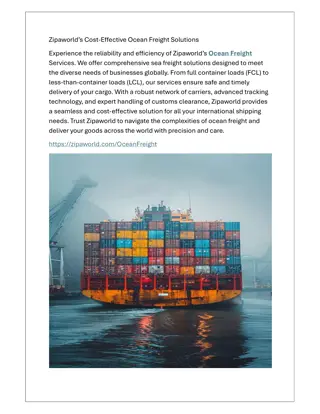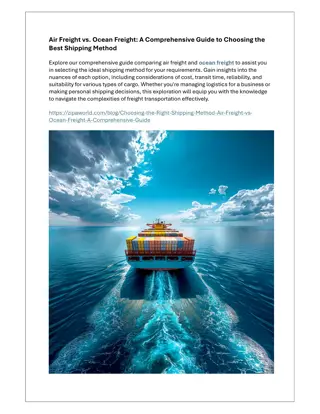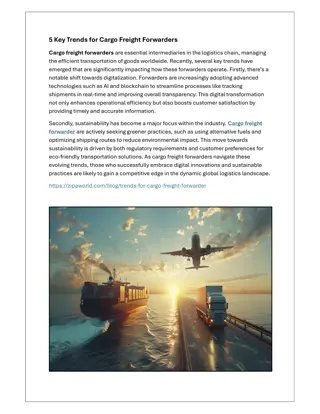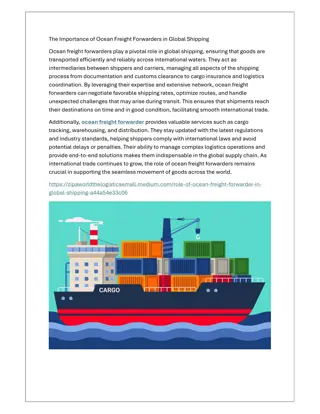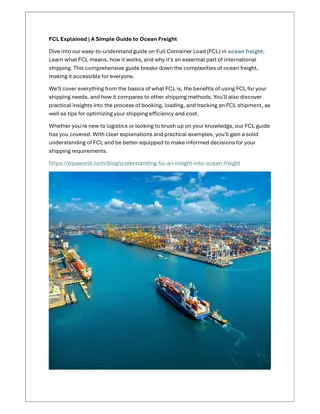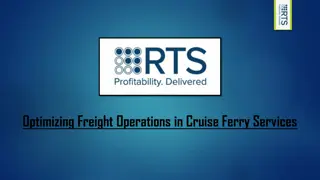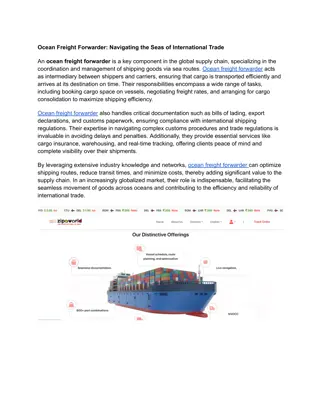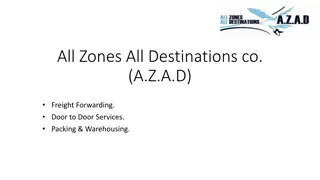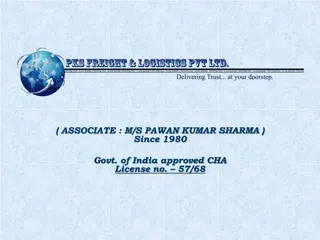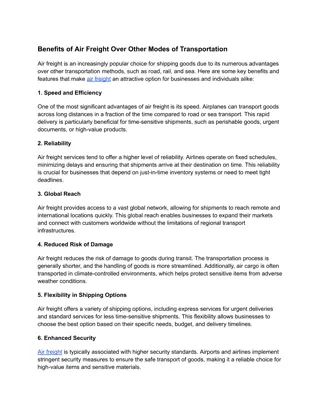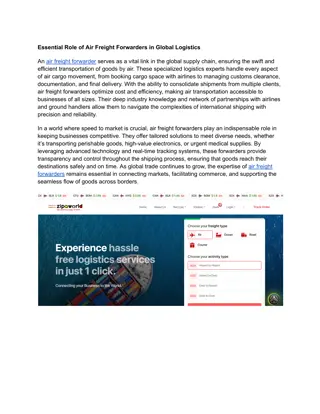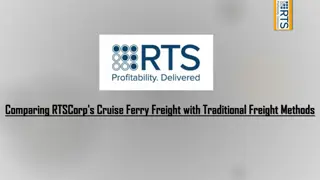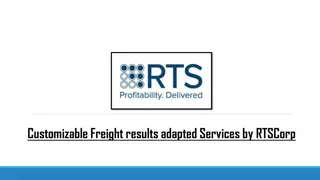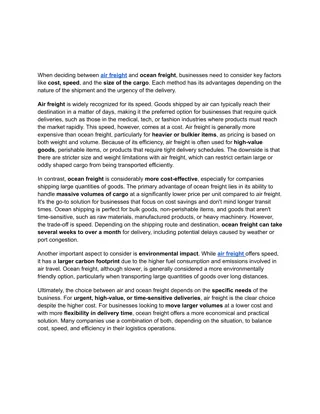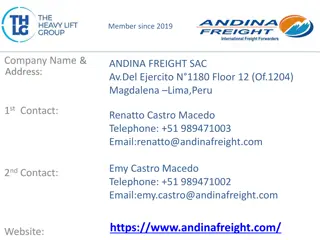
How to optimize cost in Air Freight
To optimize costs in air freight, businesses can adopt several strategies. Consolidating shipments into larger consignments helps leverage bulk rates, reducing per-unit shipping costs. Negotiating favorable air freight through strong relationships wi
Download Presentation

Please find below an Image/Link to download the presentation.
The content on the website is provided AS IS for your information and personal use only. It may not be sold, licensed, or shared on other websites without obtaining consent from the author. If you encounter any issues during the download, it is possible that the publisher has removed the file from their server.
You are allowed to download the files provided on this website for personal or commercial use, subject to the condition that they are used lawfully. All files are the property of their respective owners.
The content on the website is provided AS IS for your information and personal use only. It may not be sold, licensed, or shared on other websites without obtaining consent from the author.
E N D
Presentation Transcript
Optimizing Costs in Air Freight: Strategies for Efficient Logistics Air freight, known for its speed and reliability, is a critical component of global logistics, especially for time-sensitive and high-value shipments. However, it can also be one of the most expensive modes of transportation. To optimize costs in air freight, businesses can implement several strategies that enhance efficiency and reduce expenses without compromising service quality. 1. Consolidation of Shipments: Consolidating smaller shipments into a single, larger consignment can significantly reduce freight costs. By working with freight forwarders who offer consolidation services, businesses can take advantage of bulk rates and maximize the use of cargo space, leading to lower per-unit shipping costs. 2. Negotiating Freight Rates: Building strong relationships with air carriers and freight forwarders can lead to better rate negotiations. Businesses that consistently ship high volumes of cargo can leverage their shipment history to secure favorable terms and discounts, ultimately reducing overall transportation expenses. 3. Optimizing Packaging: Efficient packaging not only protects goods but also minimizes space and weight, which are critical factors in air freight costs. Using lightweight and compact packaging materials can reduce the dimensional weight and the overall cost of shipping. Additionally, proper packaging can prevent damage, reducing the need for costly replacements or returns. 4. Utilizing Technology: Advanced logistics technology, such as Transportation Management Systems (TMS) and real-time tracking, can optimize route planning and load management. These tools help identify the most cost-effective shipping options, monitor cargo in transit, and adjust plans dynamically to avoid delays and minimize costs. 5. Choosing the Right Service Level: Air freight services range from express delivery to economy options. Businesses should assess their delivery timelines and select the service level that best meets their needs. For non-urgent shipments, opting for a slower but more affordable service can yield significant cost savings. 6. Strategic Airport Selection: Choosing airports with lower handling fees and reduced congestion can decrease overall shipping costs. Additionally, some airports offer incentives for high-volume shippers, providing another opportunity for cost reduction. 7. Implementing Just-In-Time (JIT) Inventory: JIT inventory systems reduce the need for large warehousing spaces by aligning production schedules with delivery times. This approach minimizes storage costs and ensures that goods are shipped only when needed, reducing waste and optimizing air freight expenses. 8. Partnering with Reliable Freight Forwarders: Reliable freight forwarders with extensive networks can offer competitive rates and valuable insights into optimizing air freight costs. They
can navigate complex customs procedures, provide consolidation services, and offer tailored solutions to meet specific business needs. By adopting these strategies, businesses can effectively manage and optimize their air freight costs, ensuring a balance between speed, reliability, and affordability in their logistics operations.


